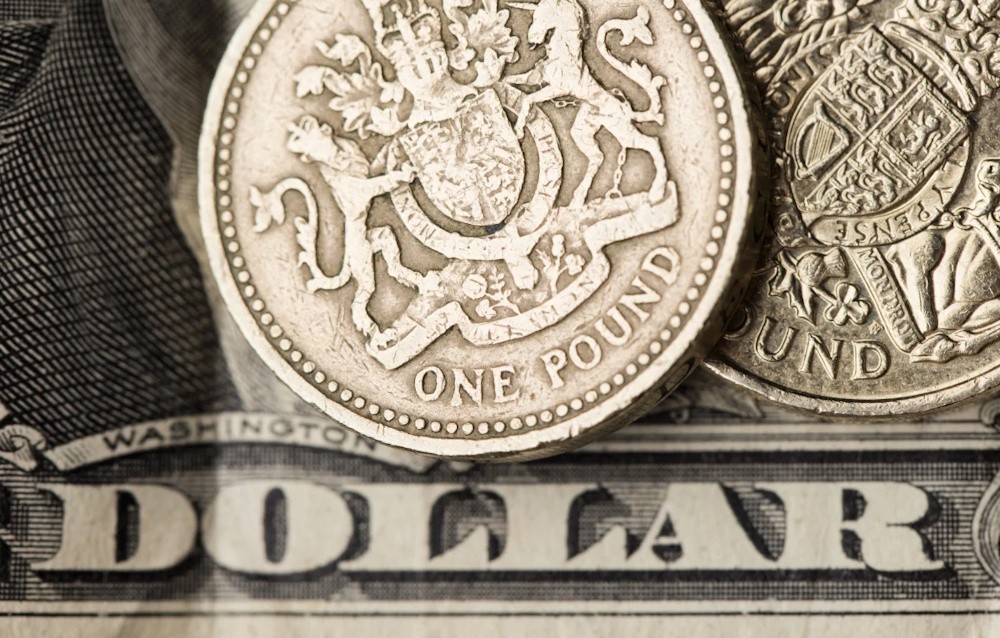The GBP/USD saw a drop on Wednesday, reaching 1.3041, its lowest level since April 2025. This movement showcases how traders are adapting to fresh fiscal uncertainties and the growing gap between the Bank of England and the U.S. Federal Reserve. The recent shift indicates Sterling’s third consecutive weekly downturn, extending its two-week decline to over 2.4%, marking the steepest decrease since November 2024. The currency’s downtrend has intensified after UK Chancellor Rachel Reeves cautioned about “challenging fiscal decisions” in her upcoming Autumn Budget, suggesting that increased taxes may be required to stabilize public finances. Reeves’s comments highlighted concerns about consumer demand and business investment, especially as UK GDP growth remains stagnant. The Pound’s decline was exacerbated by robust U.S. economic data, resulting in the Dollar Index reaching 100.08, its peak in three months, after the release of favorable ADP employment figures (+145K) and ISM Services PMI (52.4) readings. The result: Sterling was among the least successful G10 currencies for the day, falling short of both the EUR/USD 1.148 and the USD/JPY 154.04.
The recent macro divergence between the U.K. and the U.S. has widened considerably. While the Federal Reserve appears committed to a cautious, data-informed easing process, the Bank of England faces a different predicament: inflation remains at 3.8%, nearly double the target, as the economy hovers on the edge of recession. The current market shows a 6–3 decision by the BoE to keep rates at 4.00%, although a growing minority expects a possible unexpected 25 bps reduction before the year’s conclusion. Reeves’s budget warning coincides with a £22 billion fiscal gap in the UK’s public finances, and experts worry that any tightening could exacerbate the downturn. The Chancellor’s choice to keep the door open for potential tax hikes on income, VAT, or national insurance has shaken consumer confidence. On the other hand, U.S. yields are significantly elevated, with the 10-year Treasury at 4.15%, emphasizing the more appealing relative returns for USD assets.
The technical landscape suggests a dominant downward trend. GBP/USD has clearly fallen below the 200-day SMA (1.3101) and the key 1.3100 level, affirming a structural downtrend. The Relative Strength Index is presently at approximately 25, suggesting a notable oversold situation, with levels “that seldom persist for extended periods” as highlighted by Scotiabank. At this moment, there isn’t enough evidence to indicate that a bottom is taking shape. Immediate resistance is observed at 1.3033–1.3065, with support highlighted at 1.3000 and 1.2884, indicating the lower boundary of the previous April range. The momentum continues to show a downward trend, with the MACD histogram increasingly widening in the negative direction. Technical analysts have identified 1.2980 as a crucial intraday inflection point. If this level does not hold, it could result in a drop to 1.2880. On the other hand, a move above 1.3070 might initiate a rally aimed at 1.3140. Market sentiment remains firmly in a negative territory. The data shows that net GBP shorts have risen to −48K contracts, reaching the highest level since August. Cross-asset correlations reveal notable institutional shifts from Sterling to the U.S. Dollar and Swiss Franc, driven by persistent worries about fiscal credibility. Multiple high-frequency trading desks suggest that the oversold RSI and sentiment index (IG data 81% short) could lead to short-term stabilization before Thursday’s BoE decision.
Currency strategists warn that “the pound is entering a technically fragile zone where small fundamental shocks can trigger exaggerated moves,” while Nomura sets a 3-month target of 1.2800, expecting the BoE to shift dovish by early 2026. The financial story greatly impacts Sterling’s macro risk profile. Reeves’s pre-budget remarks highlighted the need for “responsible consolidation,” but the market interpreted that as a signal of potential tax increases. Considering the elevated public borrowing costs — with 10-year gilts yielding 4.25% — any policy perceived as harmful to growth might accelerate the departure of capital from U.K. assets. Meanwhile, the U.S. economy continues to show strength, supported by solid employment numbers and the vitality of the service sector. The combination of strict U.S. monetary policy and unimpressive U.K. fiscal outlook increases the potential risks for GBP/USD. Experts agree that unless the BoE shows confidence in inflation returning to target without additional tightening, Sterling may struggle to stay above 1.3000. With the BoE decision looming on Thursday, market expectations indicate a limited possibility for recovery. If the central bank continues its careful approach without offering any hints about rate cuts, GBP/USD could stabilize within the 1.3050–1.3100 range. Nonetheless, a softer stance or acknowledgment of fiscal difficulties might result in a more significant drop toward 1.2880–1.2900. On a broader horizon, Sterling seems fundamentally undervalued compared to its 10-year fair value near 1.34. Nonetheless, structural challenges like fiscal tightening, stagnant growth, and diverging yields restrict any short-term upside potential. The TradingNews.com technical model suggests a projected 1-month range of 1.2880–1.3170, with expected volatility increasing following the BoE’s statement.

